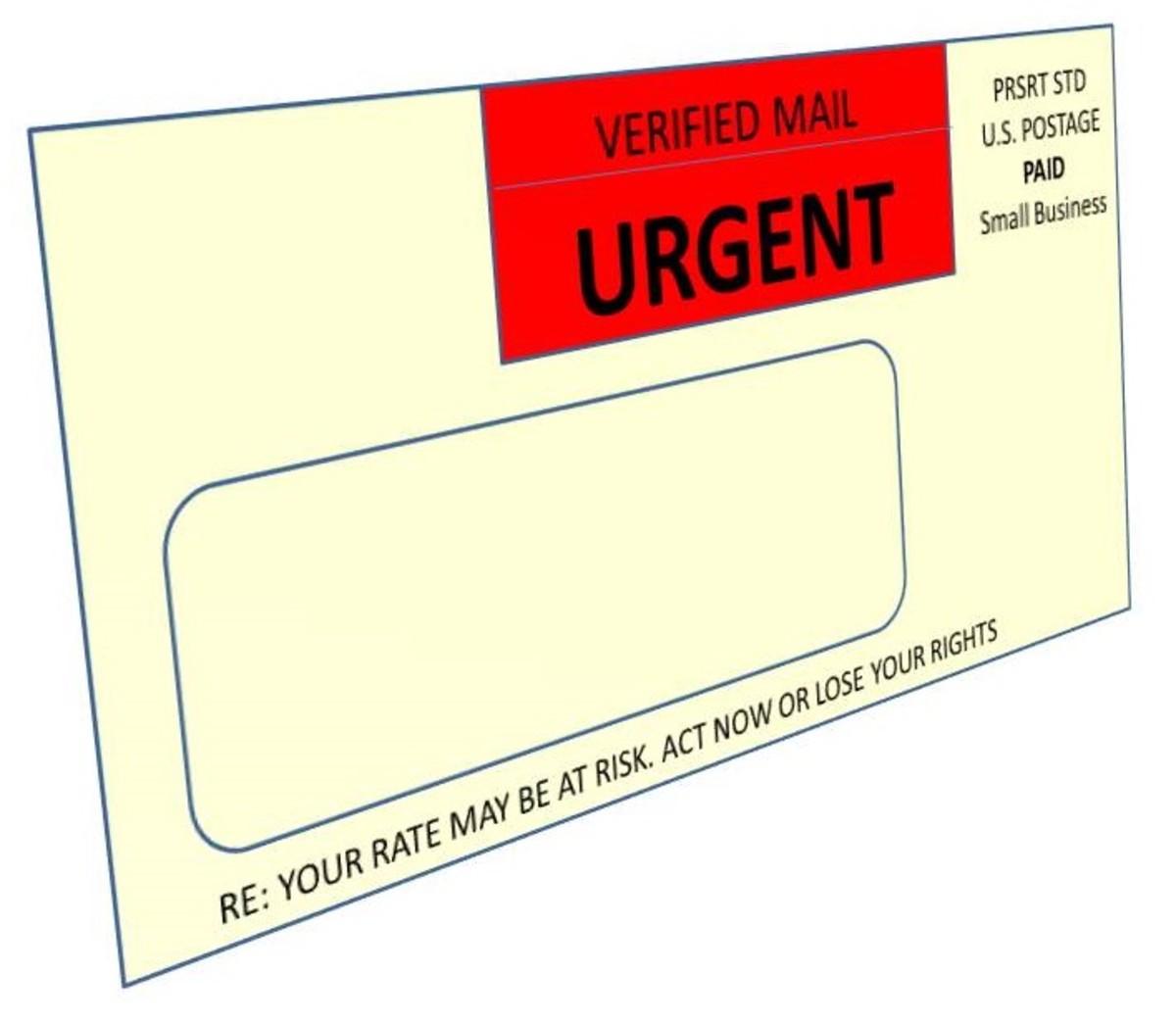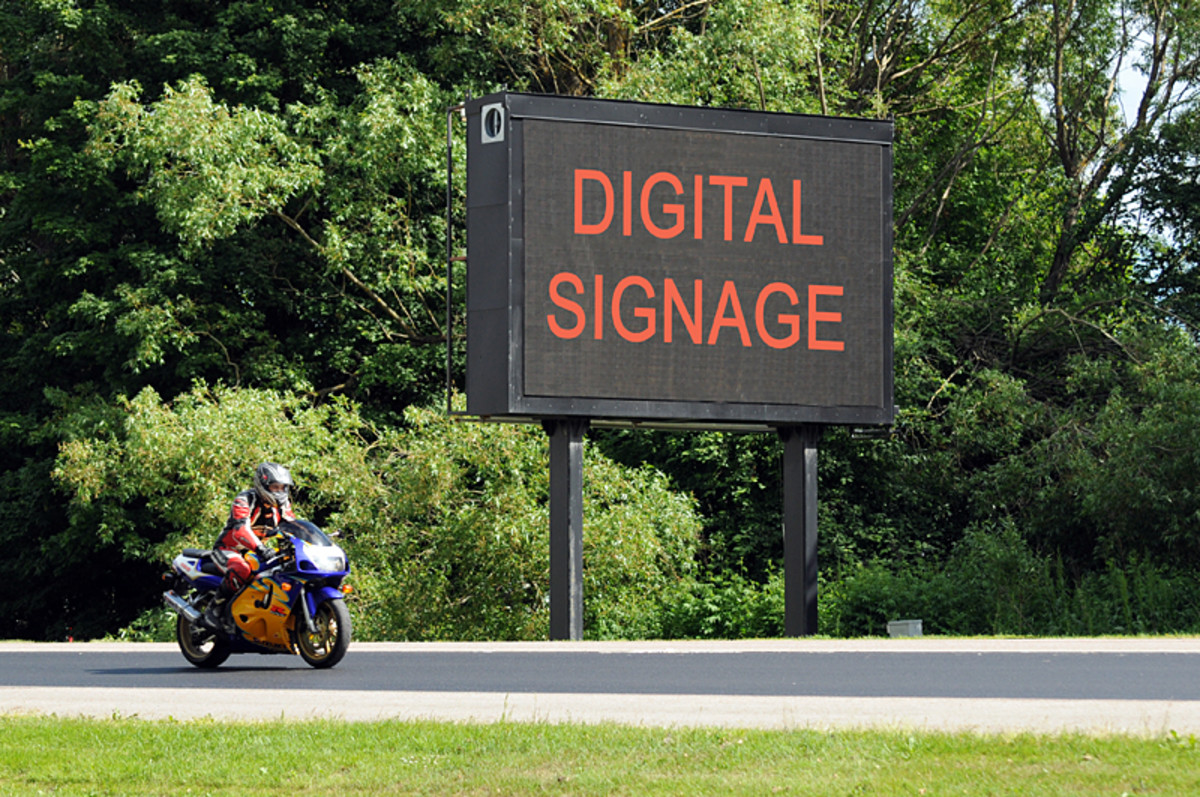Tricks that shops play to make us buy more stuff - Part I.
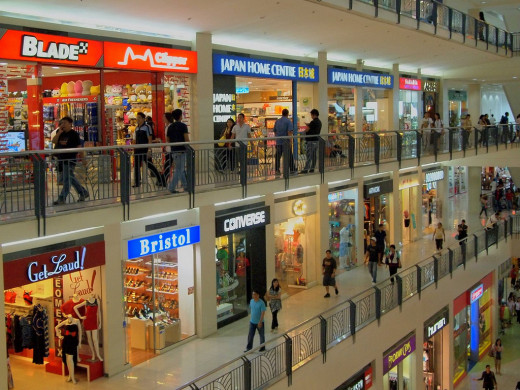
Surrounded by dirty tricks
Please allow me to start with a quote that might correctly define the main idea of this article. According to Paco Underhill, the CEO of Envirosell, author of Why We Buy – The science of shopping:
‘If we went into shops only when we needed to buy something, and if once in there we bought only what we needed, the economy would collapse, boom.’
I think it is not an overstatement to say that at least once in our life, we all went into a shop to buy a few particular things, but came out with at least twice as many items in our trolley. We all did this, we all do this. Why? Because there are tons of tricks in the shop that retailers play on us to encourage consumers buy more and more stuff – stuff, that we usually don’t even need. Each penny we spend in a particular shop means we are not spending it at the competitors’, so retail industry indeed has to work hard to be successful in seducing customers in today’s competitive market.
In the following section you can find a very comprehensive, two-part list about the possible, hidden marketing tricks that retailers are using to entice their customers – so the next time you shop, you can be prepared for almost everything.

What to look out for?
1. Scents, music, eye-candy, all without windows
The first marketing technique you encounter while shopping can be immediately seen, smelt or heard upon entering the shop. Have you ever wondered why most of the shops keep the display of fresh fruits, vegetables and flowers – sometimes even the bakery products – not too far from the entrance? Well, the answer is simple, the minute you enter the venue your eyes and your saliva glands start working thanks to the incredible products you see and smell. Therefore, you begin thinking whether it would be a good idea to buy that golden baguette. Or that fleshy peach. Or both.
Some supermarkets are even using scent machines to continuously be able to spread a particular scent into the shopping area so people will feel relaxed and make more impulse purchases.
Also, do you hear the relaxing music? If yes, then you have already fallen under the influence of the next marketing trick, as in-store music is usually set to a tempo to slow customers down. Those songs from the playlists you hear are carefully selected to keep you entertained – thus spending more time at the shop and losing the sense of time.
Windowless, big venues serve the same purpose. If you can’t see how dark it is getting outside, then you won’t feel the inner urge to finish shopping as soon as possible.
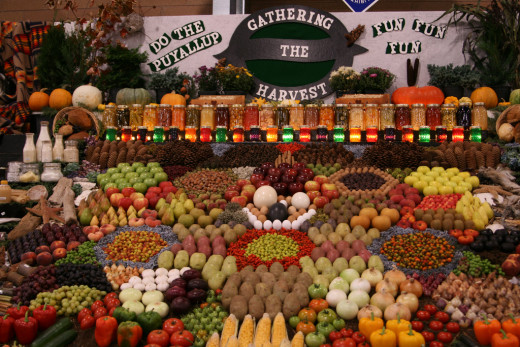
Did you know?
Impulse purchase means that a customer does not put items into their basket according to a pre-meditated shopping list, but buys items based on sudden, in-store decisions depending on what they perceive. The most risky places for these impulse purchases are queues in front of the tills, point of sale displays and magazine racks.
2. Colours and lighting
The colour of a store can have a huge impact on how you shop in general. For example, in fast food restaurants you can see lots of red. The colour red draws customers into the venue and once they are in, it makes them eat faster, giving space to the next customer drawn into the place.
Meanwhile colder, but still ‘friendly’ colours affect people to stay in longer and spend some more time shopping for products.
Also, seeing products like bakery products, fruits and vegetables in natural light conditions will surely make you feel you would like to buy those items and you will also think you are in a quality shop, buying quality products.
3. Faraway essentials
In case you regularly go to the same supermarket it is unavoidable to lose interest to just wander around the venue to discover where different products are.
After a while people – most often men – just go into the shop and go directly for the items they really need, grabbing only what they want, and then leave. This is the so-called ‘Boomerang effect’, that retailers want to avoid at all costs. This is the reason why shops place several major items, half-priced item displays, one-day specials and consumer-stopping sample-givings into the middle of the shopping areas or why they keep shuffling their stock from one place to another. In this way, you are obliged to go around and explore the long-time-no-see areas of the shops.
Also, it is not a coincidence either that essential products like milk, bread or meat are usually on the further end of the shops – as well as changing rooms in clothes shops.
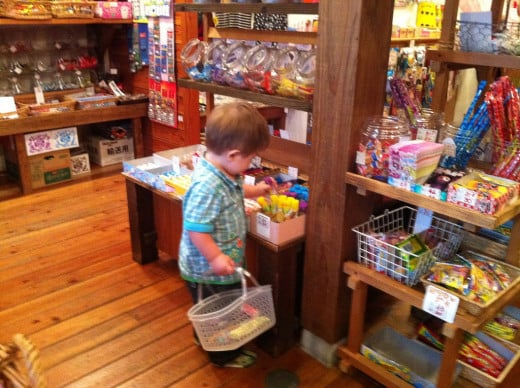
An interesting read

4. Leading you on
Most supermarkets and shops are built in a way that customers move from right to left. Also, most of the popular and essential items are on the right side of the aisle. There are no exact explanation why is this the most common setup, but scientists tend to say the reason is that in most people the left cerebral hemisphere of the brain is the dominant, which makes them to be right-handed and tend to decide in favour of the right side in everything.
Therefore it is usually also the right side, where you can find the best promotional offers, special displays and limited-time sales.
Retailers want you to easily see the items they most want you to buy. They place several desired items (usually products with the highest profit margin) at eye level, so you will notice these products faster and easier than less important products. Additionally, they place sweets, exciting toys and magazines in the eye level of kids, so they will influence their parents to buy more extra products they didn’t even want to buy in the first place.
In the past few years some retail venues expanded their stores to have more storeys as well. With this, escalators and stairs offer new dimensions and nice placements for more retail marketing tricks.
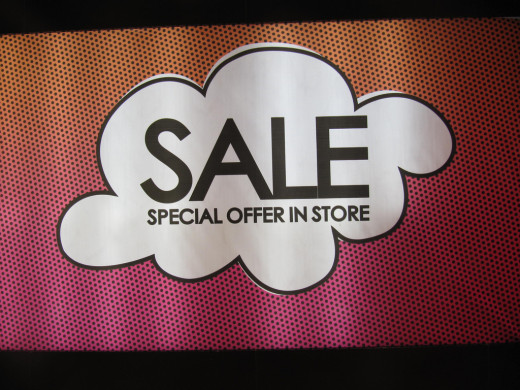
5. Not-so-limited-time sales
SALE. Yes, with bold, capital letters, usually. And printed everywhere, with huge letters. This 4-letter word will make most people work as Pavlov’s dogs, thinking sale means a bargain price for a product that was previously beyond their reach.
But in reality, these sales don’t even offer as big of a deal as they imply. Most of these products were overpriced before, but now as they are on sale, people are far more likely to buy them, just because customers think it is an unmissable deal. In some cases, products don’t even have to be offered at a real discounted price, as writing the 4 magical letters on or around them will naturally cause a spike in the number of products sold.
‘Limited time offers’ are no different, either. Just by thinking that a product is on sale for a limited time only, people are more likely to buy them to make a great bargain, even if they don’t even know how long will the offer be available or what the offer exactly is.
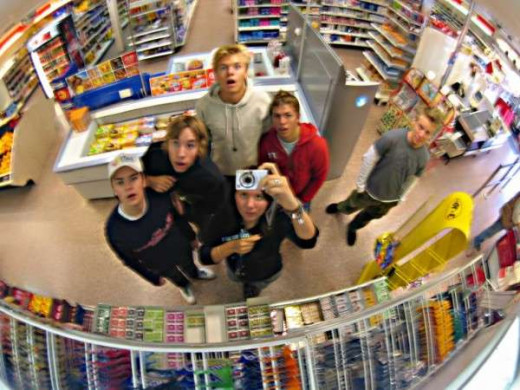
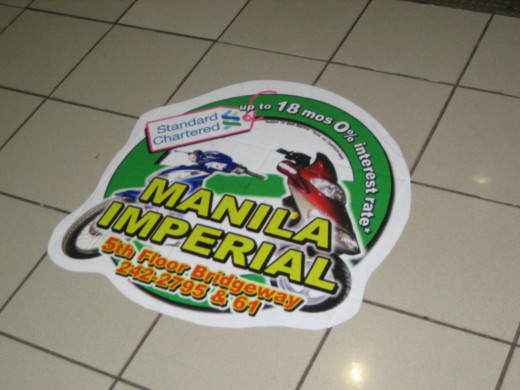
6. Slowing you down
From the above mentioned tricks you can already see that it is very important for retailers to slow you down and make you spend more time in the shop, wandering around and putting more and more items into your basket.
Relaxing music, no windows, product sampling stations and big displays all serve the same purpose.
Even small tiles do the same. Pushing a trolley forward on small tiles and constantly hear the wheels clicking make people think they are walking too fast, so they slow down and take more time looking around.
Giant stickers and arrows on the floor try to lead you in certain directions – usually well around the shopping area -, and random rugs on the floor are also subtle attempts to keep you in the venue longer.
Mirrors are traps as well. Seeing yourself in the mirror makes you stop for a minute and check how you look like – even if you are not in the clothes department trying on a new piece. Clothes racks where the clothes are not in order according to size also cause you to run through more racks, making you more vulnerable to realise, that other piece of clothing would look great on you as well.
7. The question of half empty (or half full?) trolleys
If you really want to buy only a few things, the best thing you can do upon entering a shop is to pick up a basket instead of choosing a trolley. Seeing a trolley that only contains a few products will give you the feeling you are forgetting something, therefore urging you to put more stuff into it.
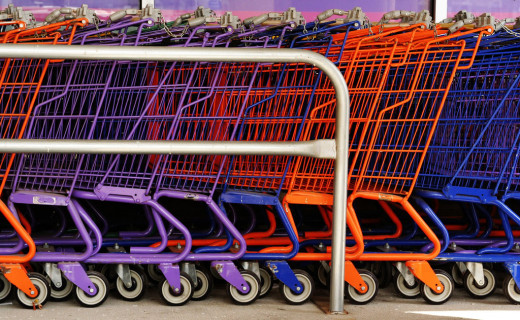
Another book by Paco Underhill

What do you think?
Have you also fallen for any of these tricks in your life?
8. Getting rid of currency signs
Although this is not really a trick played by shops but by restaurants, I still felt it is quite an important one to be mentioned. Recently many restaurants started to deliberately omit the currency signs in their menus. The reason for this is to help you forget about the price and just enjoy your meal.
9. Retail-math
$3.99 is light years better than $4. This is a fact. No matter if it is only cheaper by one cent than the other item, people are much likely to choose a product that end one cent short of a whole number, than something being advertised for a whole number. The reason for this might be the way information is processed in our brain: the first number we see on a price tag has a bigger impression on us than the following ones, therefore 3 is obviously cheaper than 4. This is called the ‘left-digit effect’.
On the other hand, according to studies, customers tend to choose a product even if that is actually a bit costlier than the other if its price ends with .99. Buying lots of items priced at .99 makes calculating more confusing as well.
Promotional offers like ‘5 for $5’ are also tricky. Advertising a product with a specified quantity is an attempt to make you buy 5 of the same product – even if you don’t need that much and otherwise would never buy 5 at once, or even if the original price of one item is exactly one fifth of the bundle offer’s price.
Double discounts can also be misleading, as a ‘one-off 45%’ discount of a $1000 item leads to a cheaper item in the end, than a ‘20%+30% off’ offer does for the same product. Just do the math.
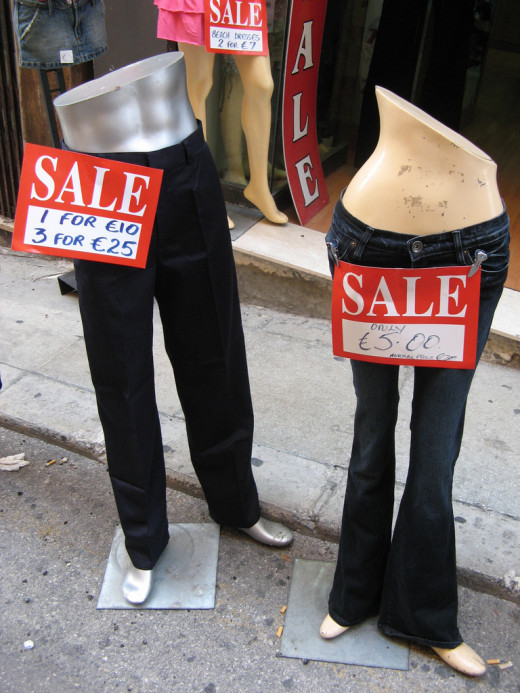
10. Not-so-complete packages
In most cases technology products are great burdens for us. Not only because it is usually hard to properly choose the right one, but companies offer a huge range of accessories for basically everything as well. You might have done a great deal by buying the newest and best mobile for a bargain price, but you will surely spend a fortune on accessories like charger kits, extra batteries, cases, screen protectors, etc. There will always be ‘just one more thing’.
Even ‘meal deals’ operate the same way: you should buy the sandwich, the drink and the chips as well if you want to get these products at a fair price.
Care to read more about malls?

11. A place to sit and relax
In most retail shops or shopping malls there are several places where you can just sit down and relax. If it is a place in a shop, then the bench or chair you are currently sitting on is probably facing merchandise that the shop is trying to get rid of as soon as possible.
In case you are putting your feet up in a mall, then you are most likely sitting in front of a very pricy shop or not too far from the restaurants and fast-food venues.
And what happens if you have to use the toilet? Well, then you are most likely facing a nice long trip and a lovely challenge to locate the restrooms – and your way to ‘heaven’ is paved with many shops and tons of merchandise, for sure.
12. Chaos on purpose
Products that are piled up are usually attracting customers a lot, because chaos and messed up products suggest popularity and a good deal, as – supposedly - tons of buyers were rooting through them the whole day. These strategically messed up displays bring in a lot of customers, no matter what the piled up product is.

Public announcement
All dividers used in this hub were created by me (zsobig), using Printmaster.
This is it for the first part
If you are interested in the other 12 tricks that you might encounter while shopping, please keep on reading the second hub on this topic, here.

My other Marketing-related works on HubPages:
- Click Through Rate (CTR) Advertising Tips
This hub is an answer for a question found in the 'unanswered' section that asks: What does CTR mean exactly? What's a good CTR number? I hope this hub will answer all the questions about CTR. Take your time! - CPM and its meaning in online advertising
CPM is a very important expression in online marketing, as with the help of this, companies can calculate their advertisement costs for each ad. Keep on reading to find out more about CPM and how can you calculate it! - Marketing all around us - The five levels of the product
Everything around us is related to marketing somewhow; in this article you can find out more about one of the most important topics in marketing: the 5 levels of the product. With a figure and examples! - Guerrilla marketing in general and tips on How to build a successful viral marketing campaign
Guerrilla marketing usually means an uncommon and new way of promoting a product or a brand. Its most important types: astroturfing, ambient media, word-of-mouth marketing and viral marketing. - The STEEP Analysis – What to analyse in the marketing environment
STEEP analysis is a very important method used in marketing to analyse the macro-economy of the company. In this article, you can find out what does it mean and how can you analyse the environment to become more successful in the future and take adva
© 2014 Sophie


